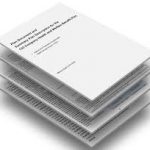Just when you think the forfeiture reallocation litigation wave can’t get any bigger, another suit drops. The latest target? The 401(k) plan of RTX, the company formerly known as Raytheon Technologies Corp.
The case, Jacob v. RTX Corp. , was filed on August 22, 2025, by plan participants Melissa Jacob and Thomas Miller. Their lawyers, Webster Book LLP, DiCello Levitt LLP, and Miller Law Firm, are the same familiar names who’ve been spearheading these forfeiture cases across the country.
The Claims
Like the other lawsuits in this line, the complaint isn’t reinventing the wheel. The plaintiffs allege the fiduciaries violated ERISA by:
1. Failing to act in accordance with plan documents.
2. Breaching duties of loyalty and prudence.
3. Using plan assets for the benefit of the employer.
4. Engaging in self-dealing.
5. Causing prohibited transactions.
On top of that, they allege RTX failed to monitor its Pension Administration and Investment Committees, always a catchall claim in these suits.
The real crux of the complaint, however, is how RTX handled plan forfeitures. Each year, fiduciaries had a choice: use forfeitures to pay plan expenses or offset employer contributions. According to the plaintiffs, RTX always picked the latter, using forfeitures to reduce its matching contributions since 2019.
What ERISA Says
The plaintiffs make sure to cite ERISA’s requirement that plan assets must be used “for the exclusive purpose of providing benefits to participants and their beneficiaries and defraying reasonable expenses of administering the plan.” And while RTX’s plan documents apparently allow forfeitures to offset employer contributions and to pay expenses, the lawsuit zeroes in on the fact that fiduciaries never chose the expense route.
That’s the sleight of hand in these complaints. Yes, the plan says forfeitures can reduce contributions, but the plaintiffs argue that doing so is never in participants’ best interest when the employer is flush with billions in profits. In their telling, if RTX has no risk of defaulting on contributions, the “right” choice should always be applying forfeitures to cover expenses—because otherwise those expenses come out of participants’ pockets.
Dollars and Numbers
The complaint throws around some big figures:
· From 2019 through 2023, participants’ accounts paid more than $25 million in administrative expenses.
· During that same period, RTX reduced contributions by $18.6 million using forfeitures.
· Unallocated forfeitures piled up year over year, hitting $6.6 million by 2023.
The plaintiffs argue that, in effect, participants lost twice: they paid expenses from their own accounts, while RTX got to lower its contributions thanks to forfeiture dollars.
A “Flawed” Process
The lawsuit doesn’t stop at outcomes; it also takes aim at process. The plaintiffs say fiduciaries didn’t even bother to create a reasoned, impartial method for deciding how to use forfeitures. Instead, they claim RTX rubber-stamped the option that benefitted itself. That lack of process, they argue, is itself a breach of the duty of prudence.
In other words: not only did RTX pick the “wrong” option every time, but it also didn’t have a documented, participant-first process for making the decision. That’s the kind of allegation courts have been listening to in fiduciary breach cases.
What It Means
Forfeiture suits have exploded in the last two years, and RTX is just the latest headline name to be dragged into court. These cases hinge on a simple but powerful point: fiduciaries must act in the best interest of participants. Even if the plan documents allow multiple uses of forfeitures, plaintiffs are arguing that prudence and loyalty demand picking the path that favors participants, especially when the employer’s financial health isn’t at risk.
For plan sponsors and fiduciaries, the lesson is obvious. If your plan allows forfeitures to offset contributions or pay expenses, you need:
· A documented process for deciding how to use them.
· A reasoned analysis that shows consideration of participant interests.
· A clear record showing why one choice was made over the other in a given year.
The lawsuits may seem formulaic, but they’re finding traction because fiduciaries haven’t been meticulous about process and documentation.
My Take
I’ve said it before: the retirement plan industry has a habit of ignoring issues until litigation forces the change. Forfeitures were always treated as a boring back-office accounting exercise—until plaintiff firms figured out there was money to be made. Now every plan sponsor should expect scrutiny.
The irony is that forfeitures, in theory, should benefit the plan and its participants no matter how they’re applied. But in litigation land, perception matters more than theory. If it looks like you’re helping the company more than the participants, you’re in trouble.
It reminds me of the old Dallas TV show, when J.R. Ewing made decisions, they were always in J.R.’s interest, never anyone else’s. In the world of ERISA, that doesn’t fly. Fiduciaries aren’t supposed to be J.R.; they’re supposed to be Bobby, always trying to do right, even when it costs more.
And that’s the bottom line here. If you don’t want to be the next RTX, you need to show you’ve been acting like Bobby, not J.R.







